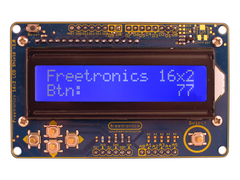The Internet opens up a whole new world of information that can be consumed, used to inform us and much more - however sometimes you may have a need to be alerted about changes in certain published data. One method of disseminating such information is with RSS feeds (Really Simple Syndication) - a stream of text that can easily be parsed.
An Ethernet-enabled Arduino or compatible board is perfect for parsing RSS feeds and this has been demonstrated by Eric Brouwer whose device checks the RSS feed from a local power distrubutor to alert of upcoming rolling blackouts. The system parses the feed for the name of an alert, and thn illuminates the matching indicator on a neat enclosure as shown below.

Even if you're not interested in the information being displayed, this project is an excellent example of parsing RSS feeds with an Arduino and taking action based on the data. To get started, visit Eric's Instructable page. And for more, we're on facebook, twitter and Google+, so follow us for news and product updates as well.

When putting together your next Internet-enabled Arduino project - save time, space and money with the Freetronics EtherTen. Apart from being fully Arduino Uno-compatible, it has onboard Ethernet, microSD socket, full USB interface (so you don't need a costly FTDI cable just to upload a sketch!) and supports optional Power-over-Ethernet.






















